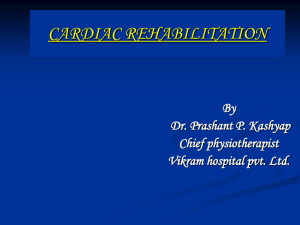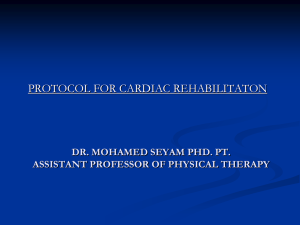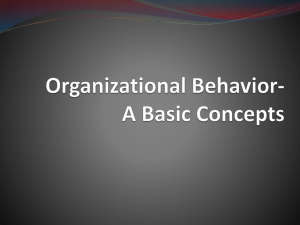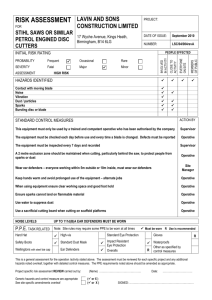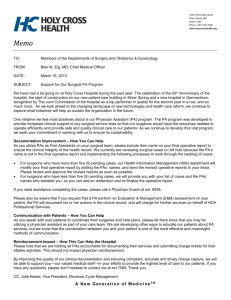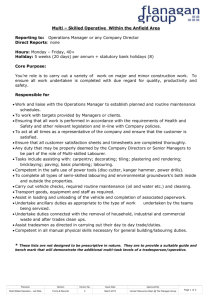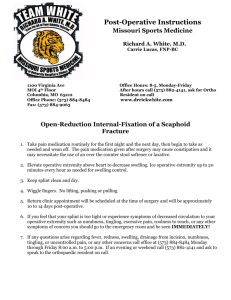cvs 6-2th lecture
advertisement
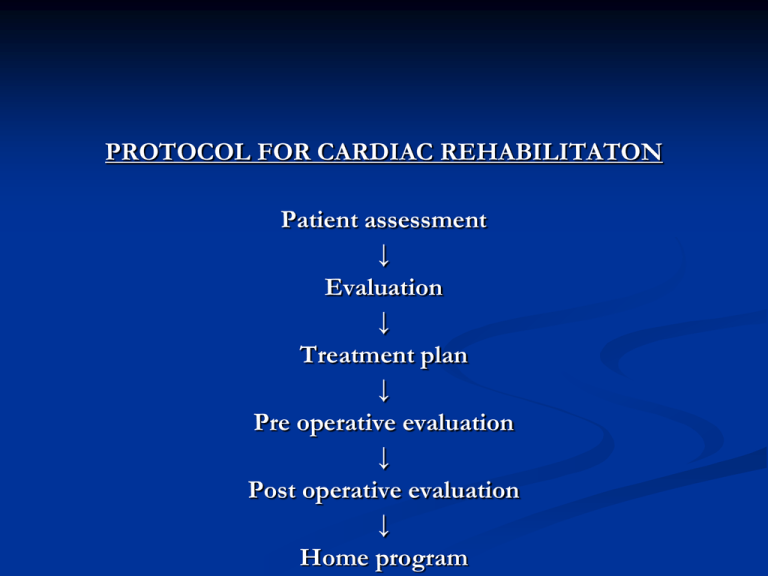
PROTOCOL FOR CARDIAC REHABILITATON Patient assessment ↓ Evaluation ↓ Treatment plan ↓ Pre operative evaluation ↓ Post operative evaluation ↓ Home program PATIENT ASSESSMENT History:- Present , Family, Social Observation: - Chest deformities, Clubbing, Cyanosis, Edema. Auscultation:- Breath sounds, Added sounds Reports: - ECG, PFT, X- RAY, TMT. EVALUATION Breathing pattern, respiratory, heart rate Effectiveness, productivity of cough Accumulation of secretions and the possible need for postural drainage Range of motion particularly shoulder joint Posture and an alignment of trunk PRE OPERATIVE PHYSIOTHERAPY It is an ideal time to prepare the patient physically and psychologically for the surgery and to teach the patient activities that will be carried out in the early post operative days. Instructions about the location of incision, incisional pain, the placement and IV tubes, Foley’s catheter, arterial line Breathing exercise instructions with emphasis on deep inspiration, posterior basal breathing, intensive spirometry or inspirometry Effective cough instruction and an explanation of wound splinting techniques Removal of any accumulative secretions with or modified postal drainage Lower extremity exercise to maintain circulation and prevent deep vain thrombosis or pulmonary embolism POST OPERATIVE PHYSIOTHERAPY: The program starts from the bed in CCU to climbing to flights at the end of 7th day. 1st post operative day : monitoring the vitals Position the patient Modified postural drainage Chest physio with postural drainage Support to the incision Wound assisted coughing and huffing Deep Breathing exercises Spirometry and ATM Monitoring the amount and colour of drain Milking 2nd post operative day: Repeat the same procedure as in the first POD if the drains are not removed Make the patient to sit on the bed in the morning Ambulate the patient in the ICU once the drains and the femoral line are removed 3rd post operative day: Chest physiotherapy is given only when the secretions are more. Steam and nebulization is continued Well ambulated in the ward. Check the BP and HR each time. 4th post operative day: Same treatment in the 3rd POD is continued Frequency of chest physio can be reduced according to the air entry in the lung fields Certain exercises are taught to the patient to prevent the stiffness in the shoulder and neck. Arm, shoulder, trunk and leg exercises to be performed including abduction and adduction Independent walking in the ward 5th post operative day: Continue the same management as earlier, Check the X-ray, lab reports and ECG Take the patient to the flights,( 10 steps up and down ) Check the vitals & stabilize the patient. 6th post operative day: Discharge counselling to be done Do’s and don’ts to be explained Home programs to be taught Patient is ready for discharge.
